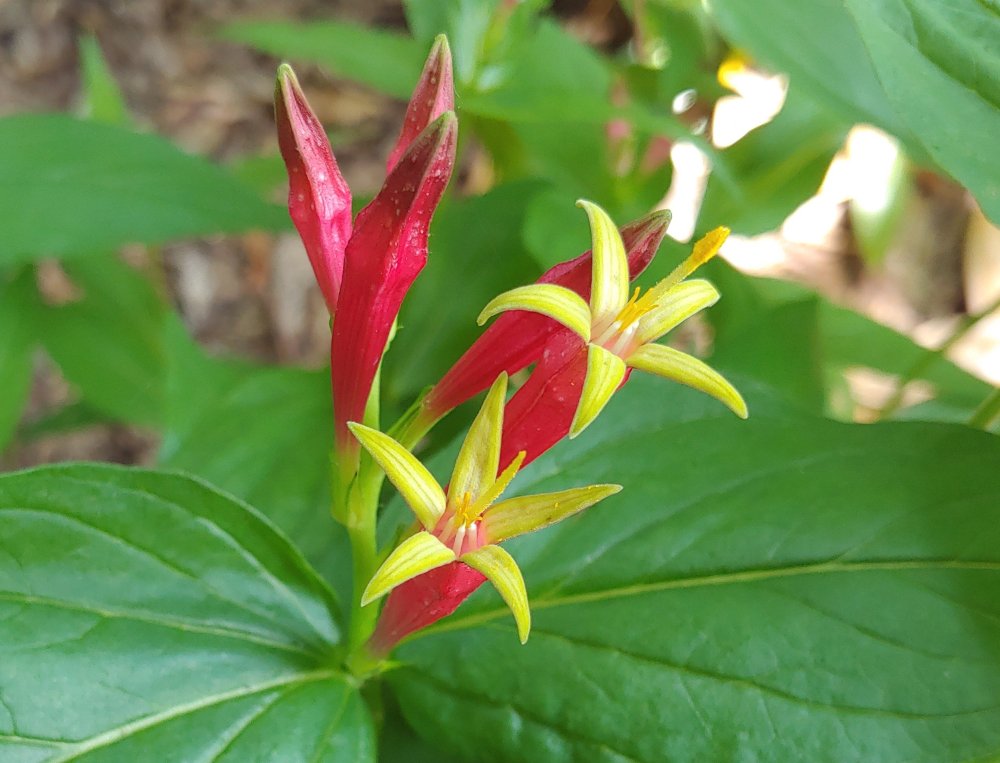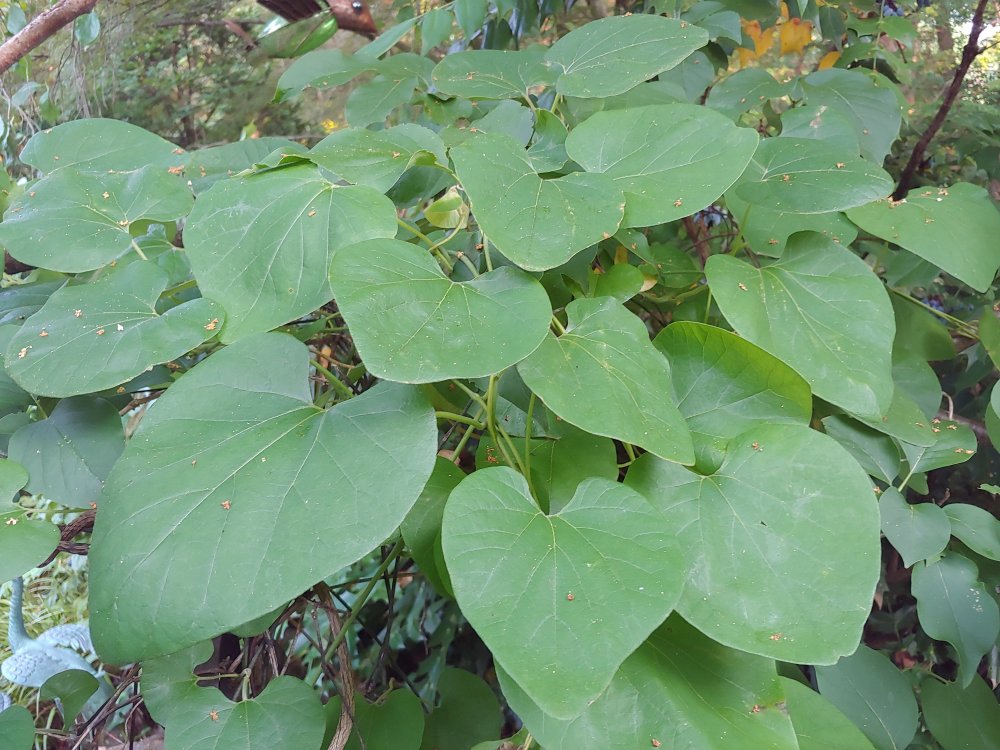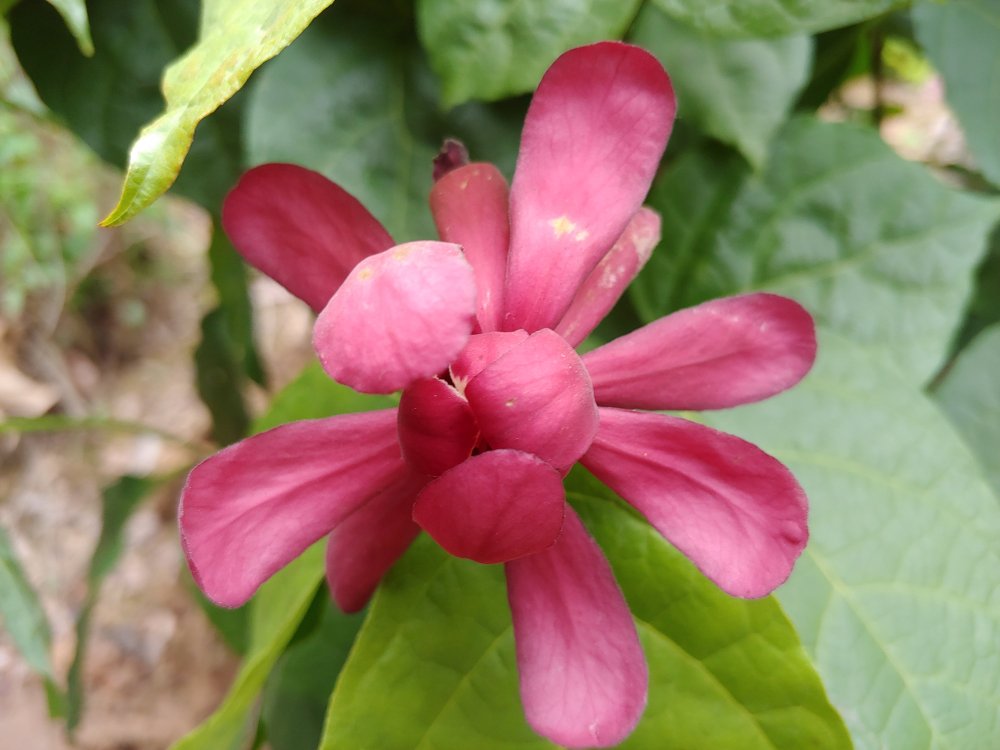Two thick clumps of Indian pinks (Spigelia marilandica) did not return this year, undoubtedly due to overly damp ground in the rear garden. It is likely I’ll replant some day when this area is not so wet, but three smaller clumps partially hidden along the driveway beneath a low branched ‘Jane’ magnolia are doing fine, another example that encourages planting in varied conditions.

This slightly sloped area is dry despite continuing regular rainfall, while even in periods of drought the lower third of the rear garden remains damp. So, perhaps Indian pinks will not be replanted exactly where the others failed, but the rear garden is home to most favorites, so a spot will be found.

While green berries are already visible on evergreen hollies, the group of deciduous, female Winterberry hollies (Ilex verticillata, above) are now flowering along with a single male that was planted after a period when berries declined to only a scattered few. The small male holly is more than sufficient to pollinate three large females (with the assistance of a variety of bees).

For whatever reason, and far be it from my understanding why, a Dutchman’s Pipe vine (Aristolochia macrophylla, above) that climbs far up into an ‘Ivory Silk’ lilac (Syringa reticulata ‘Ivory Silk’) has no flowers again this year. The lilac has lost a few branches in recent years, and I figured the added sunlight might be helpful. Also, there have been no signs of foliage eaten by Pipevine swallowtail caterpillars, though there are plentiful other butterflies (and every other area beast) in the garden.

A single flower remains on a newly planted ‘Hartlage Wine’ sweetshrub (Calycanthus floridus ‘Hartlage Wine’, above), selected for blooms that are substantially larger than the native (and the yellow flowered ‘Athens’). A white flowered ‘Venus’ was also planted, but with no blooms, so I must wait until next April to see the entire small collection in flower.
Another calycanthus! Others have been writing about their respective versions of it. I thought we had a monopoly on it. I had no idea that there are other species, and that those other species are as popular as they are elsewhere. There are a few here that are native to the Sierra Nevada, but I do not believe that they are native here. (Some insist that they are, but I have never seen them in the wild.)
I’ve considered planting the California sweetshrub, Calycanthus occidentalis, but it doesn’t appear to be much different than the east coast natives, and it’s not readily available except in very small sizes that don’t fit into this garden.
Small sizes get established much more efficiently. It happens to be one of the natives that does not need an arid climate with limited rain. It lives in riparian situations. However, as much as I like it here, it is not something that I would necessarily recommend. It is not too exciting or prolific with bloom.